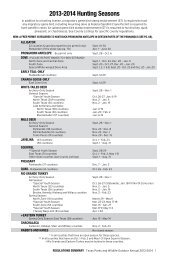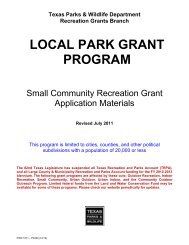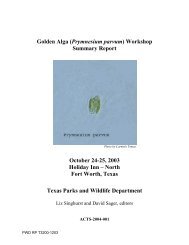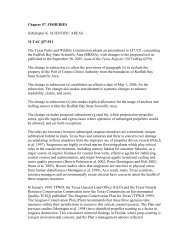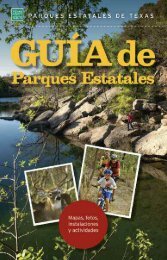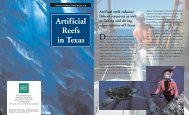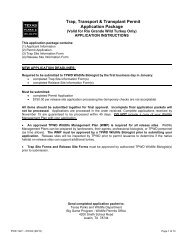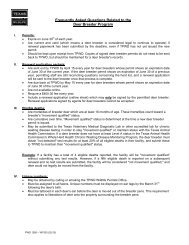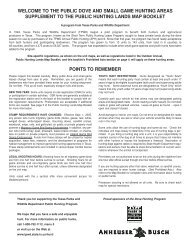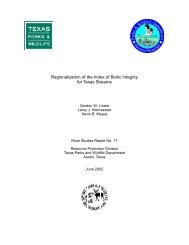1-1 Appendix 1 Responses to survey questions administered to ...
1-1 Appendix 1 Responses to survey questions administered to ...
1-1 Appendix 1 Responses to survey questions administered to ...
You also want an ePaper? Increase the reach of your titles
YUMPU automatically turns print PDFs into web optimized ePapers that Google loves.
• Funding – money spent on non-essential but popular programs, along with reduced<br />
legislative support non-competitive salaries/no pay raises in several years <br />
dissatisfaction/frustration among employees, overuse of limited, but critical<br />
personnel, and the inability <strong>to</strong> retain/attract new, high quality staff.<br />
• Lack of communication within & among divisions – information on program<br />
activities and needs does not travel down the hierarchy <strong>to</strong> people in the field (ie.<br />
biologists) who can assist in, and have the capabilities <strong>to</strong> help in development of<br />
practical sampling strategies and clear goals & objectives. Information on<br />
program activities & research does not travel between divisions, resulting in<br />
duplication of effort and missed opportunities <strong>to</strong> use the extensive capabilities<br />
available through multi-division coordination.<br />
• The pressure <strong>to</strong> publish research in internal agency documents creates an<br />
environment in which publication in external peer-reviewed formats is secondary;<br />
external peer review increases the credibility and repeatability of research<br />
• Weakness – TPWD does not invest enough in human capital. Not enough staff<br />
really knows the database or the his<strong>to</strong>ry.<br />
• Impediment - Lack of funding <strong>to</strong> adequately and competitively compensate fishery<br />
scientists. This problem results in difficulty attracting and hiring scientist that<br />
enhance our ability <strong>to</strong> apply scientific information <strong>to</strong> resource management. In<br />
addition, this funding problem also hinders moral, reduces initiative and prevents<br />
adequate staffing <strong>to</strong> effectively address some resource management issues that the<br />
Department is faced with.<br />
• The greatest impediment could be the lack of an updated library with adequate<br />
journal subscriptions in field stations.<br />
COASTAL NON-ADMINISTRATIVE--QUESTION 2<br />
RESPONSES: 30<br />
What is the greatest strength/weakness in standardized assessment procedures?<br />
• Strength. Long term data base and good data analysts.<br />
• Strength – very consistent data, very high level of “trust” in data.<br />
• Obtaining quality data.<br />
• Strengths: Reliable and defensible. Comparability of collected data among years.<br />
• Strength: Ability <strong>to</strong> compare data between years and areas.<br />
• The greatest strength is again the massive amount of fisheries data readily<br />
available for analysis, which has been obtained through a reasonably uniform<br />
sampling over the years.<br />
• Strength-consistency of data collection over time.<br />
• Strength – Continuity and comparability of the data over long periods of time and<br />
changes in personnel.<br />
• Strength: Ability <strong>to</strong> withstand court proceedings; comparable coastwide data from<br />
year <strong>to</strong> year.<br />
2-9



